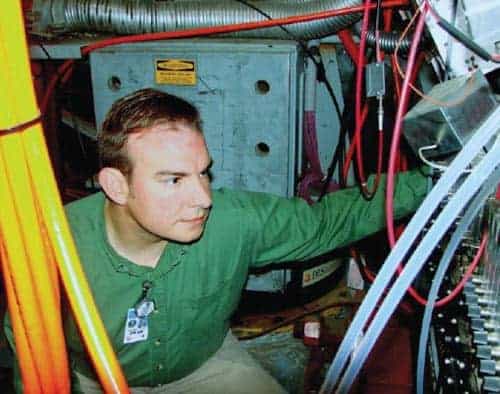
Blogger: Steve Sekula
URL: steve.cooleysekula.net/blog
First post: January 2005
Who is the blog written by?
Steve Sekula is a physics postdoc at Ohio State University in the US. Much of his recent work has been on the BaBar experiment, which studies the decay of B-mesons and is based at the Stanford Linear Accelerator Center (SLAC). Although BaBar’s detecting phase ended in April 2008, data-sifting is expected to continue for several years as physicists search for clues about the origin of charge—parity violation (the subject of this year’s Nobel Prize for Physics). Sekula also plays drums in a rock band, which makes a few cameo appearances in his blog.
What topics does the blog cover?
Archived categories include computing and physics, alongside non-science subjects like politics and education. Many entries filed under “random” and “rant” also have a strong science focus. One “rant”, for example, describes a pseudoscientific pamphlet Sekula received in the post, and his subsequent deconstruction of the leaflet’s so-called theory of a geocentric universe. A recent series of entries describes life on the seminar circuit, as Sekula tours universities in the eastern US and Canada talking about his work on BaBar.
How often is it updated?
Almost daily. In September, for example, there were 29 entries, with the combination of US presidential politics and the switch-on of the Large Hadron Collider providing plenty of post fodder. “Each day, I try to find one topic that I find funny, inspiring, frustrating or unique,” Sekula told Physics World. The act of writing things down helps him make sense of life, he says.
Why should I read it?
Although entries on Sekula’s personal life may have limited appeal for outsiders, the sheer volume and variety of posts means that most readers will find something interesting at least once a week. Those seeking a more in-depth treatment of the physics and foibles of BaBar may also want to look at Sekula’s “professional” blog Going Up Alleys (steve.cooleysekula.net/goingupalleys).
Can you give me a sample quote?
The high-energy physics story is “We ask it, we build it, we learn something, and the technology is useful for other purposes we didn’t foresee”. It’s a great story, I think. But Washington wants a better story. They want a “Theory of Spinoffs” — a story that tells them and the public that investment in HEP inevitably leads to new technology, something which changes the world (and makes big bucks for the economy). This [theory] goes more along the lines of “We ask it, we build it, we learn something, and we will use the technology to do other things that weren’t foreseen but were inevitable”. It’s this inevitability that worries me.
Where does the hamster come into it?
Sekula says that when he was an undergraduate, one of his mentors joked that physics students were like hamsters — always running on little wheels, thinking they’re going somewhere fast but never getting anywhere. “This idea stuck with me,” he says. “It makes me ask myself, ‘Am I actually making progress in understanding the universe, or am I spinning my wheels?’ This perspective can be very helpful at times.”



